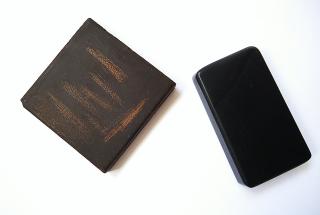Living Touchstones
The Unitarian Universalist Church I grew up in nurtured what I most cherish about my life. I felt cherished at church. I learned how to be resilient, how beloved community is really hard work, and how that hard work is so valuable.
Sunday school boosted my spirit, and I needed that boost for the rest of the week. When I said I wanted to bring my Sunday school to public school, my Sunday school teacher suggested I learn my church’s covenant. I can still say it from memory fifty years later:
Love is the doctrine of this Church
the quest for truth a sacrament
and service is our prayer.
To dwell together in peace,
to seek knowledge in freedom,
to serve all people in fellowship,
to the end that all souls shall
grow into harmony with the Divine -
Thus do we covenant with each other.
This covenant survives in me after the acid tests of joys and sorrows and the hard struggles of living in beloved community. It became my spiritual touchstone because it carries for me the love I got growing up in the First UU Church of Columbus.
But even as it endured the acid tests of time, I’ve never agreed with all of it. And what I disagree with is always changing. Even before I memorized it, I knew it would fail to live up to its great promise. Because as I walked home after that day at Sunday school, I saw it contradicted by a bumper-sticker that some folks at church used to like. The bumper-sticker said:
“To Question is the Answer”
I still hate that bumper-sticker.
Because my beloved church-people didn’t question my inherent worth and dignity! They didn’t pour acid on my hopes and dreams. They didn’t want hate or anger to corrode their souls—or mine.
My beloved church-people became my living, breathing answers of love and friendship and hope. They were my living, breathing answers to my wild, unanswerable questions. They live in that covenant, and it’s a touchstone in my heart because it always reminds me I am beloved. It always reminds me I’ve been worthy of hope. It always reminds me that I don’t ever have to be alone.
But here I am going on about touchstones and acid tests. You know, these aren’t just figures of speech. An acid test or a touchstone can be a poetic image, but when I was a Jeweler, I used an actual touchstone and did real, live acid tests.
Before I was called as a UU minister, I was a jeweler like my father and like my grandfather. One of the first jeweler’s skills I learned was how to do an acid test. And an acid test requires a touchstone. The touchstone I used had been my grandfather’s—a small, square block of dense, black, metamorphic rock with a flat finish.

Examples of the jeweler’s touchstones in Rev. Joel’s homily.
Jewelers, coin-dealers, and other folks have used the acid test for two thousand years. Jewelers use the acid test to identify the type and quality of gold of jewelry. So when a customer wants to know if an old family wedding ring was really gold, I would do the acid test on it. As the customer watched, I would carefully rub the ring against the touchstone. Then next to that I made rubbings from at least three small sticks of gold. Each stick was a different and known quality of gold. Then I would take a drop of a special acid called Aqua Regia (nitric and hydrochloric acid) and spread the drop across all the rubbings.
The drop of acid dissolves all metals but gold, and the amount of gold left in each rubbing revealed the quantity and quality of the gold. When I did the test, the rubbing from the ring would usually match one of the rubbings from the needles. Most rings were 14 Karat gold, or about 58% gold and 42% copper, silver, or nickel. It was a very bad sign when the mark from the ring bubbled-up fast, turned green, and then disappeared: the ring was gold-plated and basically had no gold at all.
Having determined the gold content of the ring, we would wash the touchstone for the next acid test.
The acid test is described in ancient Greek literature, and through the centuries it became a metaphor for the way suffering can burn away what is false and empty. My experience of a church is a touchstone that reminds me of what is golden in my life after the acid tests of suffering burn away what is false and empty.
A jeweler’s touchstone will last hundreds of years—even longer. Good spiritual touchstones also have an enduring quality to them—but touchstones can be misused, they can wear out, and like anything made of rock, they can sometimes used to harm rather than heal the world.
And touchstones do wear out. No problem: the good thing about touchstones—both the rock kind as well as the spiritual kind—is that they’re made of either figurative or literal rock. And since it’s rock, it’s free for the taking… if you know where to search.
The spiritual touchstones I trust are found in community. Sometimes we mine them together out of the hardness of our lives. Or they may be old touchstones we give new meanings after we understand how they sometimes fail to work.
I know from my experiences as a UU that the best touchstones are alive. The best touchstones live and breathe as the people of a beloved community. In return, we know we are becoming beloved community when, together, we become living touchstones for each other. Let our lives be like those rocks and hold nothing false and empty. Let all our living be the rock on which each of us finds our greatest treasures and our deepest loves.
| Date added | |
|---|---|
| Tagged as |